Bird’s Eye View







Many people ask why we persist in our legal battles against the government over spring hunting, especially given that we have lost all prohibitory injunctions so far. The answer is simple: we have no choice. We must challenge an illegal state action that threatens a vulnerable species.
BirdLife Malta feels a duty to take a stand. We are faced with two options: allow the government to break the law unopposed, or fight back. Turning a blind eye would only enable further inaction, especially given Malta’s chronic lack of enforcement. It is clear that institutions such as Ornis, the Malta Police Force, ERA and WBRU serve their political masters rather than the law. Accepting this is not an option.
This leaves us with one path: the legal route, which takes time but remains essential. Alongside our prohibitory injunctions, we have an ongoing court case addressing this issue.
While we are confident that the European Commission will eventually hold Malta accountable, we also feel duty bound to take action ourselves.
Unfortunately, spring hunting is just one of many environmental challenges we face. Illegal finch trapping continues, and BirdLife Malta – together with other environmental NGOs – is fighting against rampant overdevelopment that’s turning our islands into a concrete wasteland. But these challenges do not weaken our resolve. On the contrary, they strengthen our determination to defend nature.
Darryl Grima President
The culprits in this list were brought to justice after being observed and reported by BirdLife Malta.
Dec 2024: CRIME: Woman sending threatening messages to BirdLife Malta online (Oct 2023) PUNISHMENT: Woman fined €1000 .
Dec 2024: CRIME: Trapper trapping for finches closed season at Santa Katerina (March 2024) PUNISHMENT: Trapper fined €2000 + lifetime trapping ban.
Jan 2025: CRIME: Hunter hunting within 150m of residential area in Kalkara (April 2024) PUNISHMENT: Hunter fined €500.
Feb 2025: CRIME: Trapper trapping finches on unregistered site at L-Aħrax (Nov 2023) PUNISHMENT: Trapper fined €1200 + ban on trapping for two years.
Feb 2025: CRIME: Hunter shooting and killing protected European beeeater at Ta’ Lippija (Sept 2024). PUNISHMENT: Hunter fined €1000 + ban on hunting for two years.
The Richard’s Pipit is a small bird with an upright stance and distinctive high-pitched call. It prefers open habitats like grasslands and farmland, where it forages for insects and seeds. Its streaked brown plumage and darting movements make it a challenge to spot. Seeing a Richard’s Pipit in Malta is a rare treat, even for seasoned birdwatchers. This winter, two individuals were seen in southern Malta.


Editorial Board Antonia Micallef (Editor), Victor Falzon (Naturalist & Field Teacher),
Mintoff (Graphic Design & Digital Media Communication Officer),
Belhadj (Communication Assistant), Yusuf Gamal (Photography and Film Production Assistant), Nastasya Koroleva (Volunteers & Events Coordinator), Tamar Antia (Events & Outreach Assistant), Giada Lampitelli (Education Officer).
BirdLife Malta Council Darryl Grima (President), Caldon Mercieca (Vice-President), Norman Chetcuti (Treasurer), Denise Casolani (Council Secretary), James Aquilina, Miriam Camilleri, Eurydike Kovacs, Paul Portelli, Kathleen Psaila Galea, Raphael Soler, Steve Zammit Lupi (members)
Senior Management Team Mark Sultana (CEO), Nicholas Barbara (Head of Conservation), Mark Gauci (Head of Land Management), Stefania Papadopol (Head of Public Engagement), Antonia Micallef (Public Engagement Executive), Gabriella Seguna Galea (Finance Manager), Manuel Mallia (Salina Park Manager), Manya Russo (LIFE PanPuffinus! Project Manager), Janet Borg (Office Coordinator)
Design Cinzia Mintoff
Contact BirdLife Malta
mailing address: 57/28 Abate Rigord Street, Ta’ Xbiex XBX 1120, Malta tel: +356 21347645 • email: info@birdlifemalta.org • website: www.birdlifemalta.org



The European Commission (EC) has sent a formal notice warning Malta for failing to comply with the European Court of Justice (ECJ) ruling of 19 September 2024. The ECJ had ruled that Malta’s derogation allowing trappers to catch seven finch species violated the EU Birds Directive. Despite this, the government introduced a similar derogation, now rejected by the Commission. On 12 February 2025, the EC criticised Malta’s justification and trapping methods. The government now has two months to respond or risk financial sanctions. BirdLife Malta urges Prime Minister Robert Abela to stop Hunting Minister Clint Camilleri from prioritising hunters and trappers over nature and start protecting wildlife for a change.

A total of 77 protected birds were confirmed shot by hunters since the hunting season opened on 1 September 2024. BirdLife Malta recovered 41 birds with shotgun injuries, while police handled another 36 cases. Casualties included a short-eared owl recovered
from Għar Lapsi on Christmas day. The hunting season ended on 31 January 2025 – supposedly a brief respite for wintering birds and those beginning their spring migration – but hunting has persisted even beyond January.
Two trappers were sentenced to a one-year conditional discharge after being found guilty of assaulting and injuring two BirdLife Malta staff members in Magħtab in 2022. The team was reporting illegal trapping when the men followed, verbally

The two trappers shortly before attacking the BirdLife team abused, and attacked them. Despite evidence, the court acquitted them of some charges due to a legal time lapse. BirdLife Malta CEO Mark Sultana criticised the failure to ensure justice and will address concerns with the Commissioner of Police. BirdLife Malta thanks legal representatives Dr Stephen Tonna Lowell and Dr Ana Thomas for their support in the case.
The European Commission has proposed a ban on lead ammunition and fishing weights to protect human health and wildlife. Lead is highly toxic, yet 44,000 tonnes still pollute Europe’s environment every year, poisoning wildlife and contaminating water and soil. BirdLife Malta has joined the #BanLeadNow campaign calling for a full ban. The proposal is a step forward but there are loopholes that can weaken its impact. We urge decision-makers to close these gaps and ensure a science-based ban. The proposal will now be discussed by the REACH Committee, followed by review by the European Parliament and Council.

BirdLife Malta donated three native trees – two mediterranean buckthorns and one lentisk – to the Ħal Luqa community. The initiative was in collaboration with the Ħal Luqa Local Council and the Primary School, and aimed to replace a hazardous tree removed last October. Students planted the young trees at Misraħ iż-Żgħażagħ, alongside Mayor John Schembri who praised the project. BirdLife Malta CEO Mark Sultana highlighted the importance of restoring urban biodiversity. The event reflected our mission to protect nature while engaging the community, especially the young generation.

In 2024, BirdLife Malta ringers recorded 46 foreign-ringed birds. The birds were of 22 species and hailed from 20 countries. The oldest was a 26-year-old greater flamingo that had been ringed as a chick in Spain, and spotted at Salina nature reserve. The fastest was an osprey that flew from Norway to Għadira in nine days. From a Finnish sedge warbler to a Swedish willow warbler, these extraordinary travellers yearly confirm how vital Malta is as a stopover for migrating birds.


On 11 January 2025 volunteers gathered to count white wagtails at three key roosting sites in Malta. Wintering white wagtails like to gather for sleep in large numbers in selected sites with sheltered trees. Every evening at sunset they fly in from the countryside to roost. Malta’s largest wagtail roost by far is in Pjazza Assedju in Valletta. During this year’s event – an annual tradition in Valletta since 1985 – our volunteers counted 14,780 wagtails in the capital. Numbers were lower than last year’s record-breaking count, likely due to birds returning to other sites. The Pjazza Rotunda wagtail roost in Mosta showed signs of recovery, with an eightfold increase on last year’s count. Meanwhile, Qawra’s roost grew by 69%.
WORDS Antonia Micallef Public Engagement Executive
BirdLife Malta is proud to be named runner-up at the Vuċi GħallAnnimali Awards 2024. The award celebrates organisations making a transformative impact on animal welfare. BirdLife Malta’s advocacy, including the #CitizensAgainstTrapping campaign and efforts to protect European turtle-doves and finches, earned us this recognition. The Association for Abandoned Animals (AAA) won the award for their ongoing work to address Malta’s animal abandonment crisis. Fabio Spiteri and Angelique Lofaro were honoured with the Unsung Animal Warrior Award and runner-up recognition, respectively. Congratulations to all finalists, winners and supporters of animal welfare in Malta. The event was held on 18 December 2024.

The purple heron is one of the largest herons that occur in Malta. It has a slender body and stands tall with a long neck and large bill. The adult plumage is striking, featuring a black crown with two sharp black plumes that can be up to 15cm long. A black stripe extends from the ear to these plumes. Its head and neck have distinctive chestnut to red-orange buff sides, while the chin and front of the neck are white with elongated black and white streaks. The back and upper wings are slate grey, as are the flight feathers. In flight, the leading edges of the wing feathers reveal a dark chestnut hue, while the underwings are dark grey with chestnut forewing feathers. The lower back and breast display chestnut to buff plumes. When at rest, the purple heron has a deep red chestnut “shoulder” patch. Its bill is yellowish.
Juveniles have much paler plumage, with brown upperparts and buff feather edges. Their underparts are buff, and the breast is dark brown with streaks. The crown is black with a short crest, but they lack the distinct stripes on the sides of the head and neck seen in adults. Their bill and legs are dull brown with less yellow than the adults.
The purple heron breeds from central to southern Europe, Africa, and the southern and eastern Palearctic. It nests in colonies in reedbeds or trees near the water’s edge, often in large lakes or extensive wetlands. The nest is bulky and consists of dead reeds and small branches. After nesting, the population
MALTESE NAME: Russett Aħmar
SCIENTIFIC NAME: Ardea purpurea
LENGTH: 70–97 cm
WINGSPAN: 120–152 cm
CONSERVATION STATUS: Least concern (IUCN 2020)
LOCAL STATUS: Common spring and autumn migrant
CALL: Short, hoarse ‘krrek’
BEHAVIOUR: Normally shy, hides among vegetation
HABITAT: Wetlands surrounded by dense vegetation
migrates south within its range. Like most herons, the purple heron is carnivorous, feeding mainly on fish, small mammals and amphibians. It also eats nestling birds, snakes, lizards, crustaceans, water snails, insects and spiders.
In Malta, the purple heron appears during spring (early March to May) and autumn (August to late October) migrations. It is fairly common and can be seen across the country, migrating alone, in small groups or in larger flocks, often mixing with grey herons. The best places to spot this species are Simar and Għadira nature reserves. Unlike the grey heron, the purple heron rarely ventures into open spaces, preferring to hide among reeds in shallow waters, where its plumage blends seamlessly with the vegetation, making it nearly invisible.

PHOTOGRAPHS


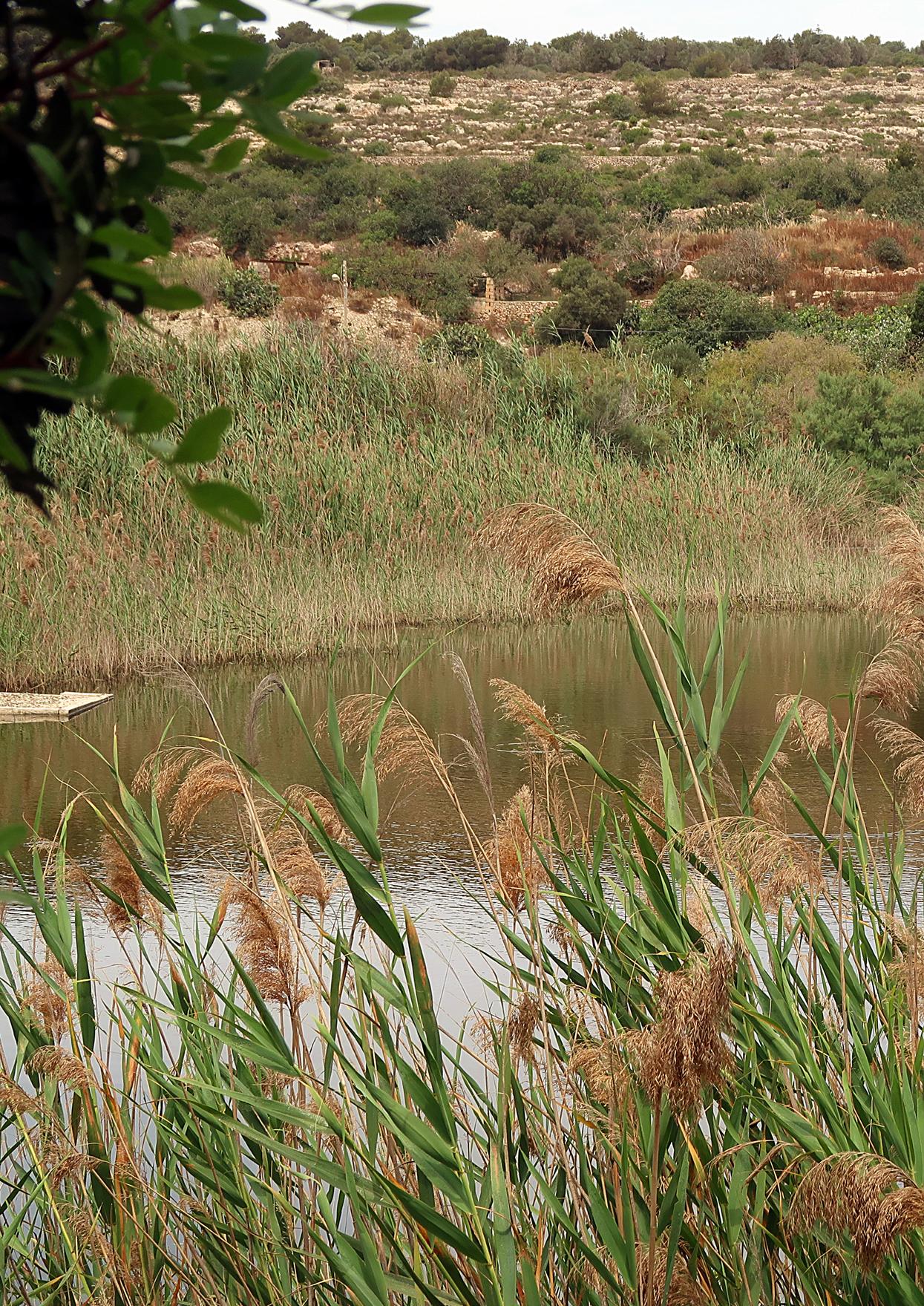
Opening hours September to May
Monday, Tuesday, Thursday & Friday 2pm-7pm Sunday 10am-4pm Entrance free (donations welcome!)
More info at https://birdlifemalta.org/nature-reserves/is-simar/

Bomblu Iswed Xylocopa violacea
A large hairy black bee buzzing around your head can give you the heeby jeebies. But it’s only a carpenter bee! Yes, it does carry a sting but it’s not aggressive or bad-tempered. So stop waving your arms and resume your walk – or better still, observe what they’re doing. Bees are not interested in us, they’ll be either looking for flowers or a nesting place. Unlike the gregarious honey-bee, the carpenter bee is solitary, and nests in hollow stalks such as reed stems. You may even catch her boring a neat round hole in the stalk (hence the reference to joinery) to make a handy hobbit entrance. There are substantial reedbeds at Simar, so plenty desres for this miniature soft toy!
Gallozz Iswed Gallinula chloropus
Of the dozen or so rail species recorded in Malta, the moorhen is the one you’re most likely to see, as this bird is a year-round resident breeding bird. Moorhens only began nesting regularly in the 1980s, basically with the restoration of the wetands at Għadira and Is-Simar. Several pairs now breed at these protected sites (now also at Salina) and every year young moorhens leave the areas and disperse to other potential breeding locations, such as damp valleys with seasonal streams. But hunters invariably shoot these birds, so it’s hard for moorhens to establish new populations. Naturally, at Simar human persecution is not an issue, so it remains one rare haven for these shy birds.


Buttuniera Lobularia maritima
It’s very common and grows almost everywhere, flowering profusely. It starts showing up in autumn after a stint of rain, but it’s in bloom practically all year. Its explosion of flowers, arranged in spherical clusters of florets like miniature ortensias are among its main attractions. The plant is very short and delicate but those scores of white pompoms that give the plant its Maltese name will still catch your attention. And if their appearance doesn't, their scent will: a stand of Alison will mildly sweeten the air around it. Wild flowers are considered sacred at our nature reserves, as they provide sustenance to myriad insects, and are therefore vital links in the food web.
WORDS


Imagine a world where every child, regardless of ability, can explore the wonders of nature, feel the crunch of leaves underfoot, listen to birdsong, and understand their role in protecting the environment. A Superpower to Defend Nature (ASDN), an Erasmus+ funded project, is turning this vision into reality.
This initiative seeks to ensure that children with learning and developmental disabilities not only experience nature but also become active in environmental conservation. By making outdoor education more inclusive, the project fosters a sense of belonging and empowers these children to take part in climate action.
By creating adapted learning materials, the project strengthens the participation of children with disabilities in environmental activities. These resources are designed not only to educate but also to inspire a lifelong connection with nature, fostering environmental responsibility from an early age.


One of the most effective aspects of ASDN is the creation of specialised educational resources that make nature-based learning accessible to everyone.
This resource provides practical strategies for engaging children with cognitive disabilities in outdoor learning experiences, ensuring that nature becomes a place of discovery for all.
By equipping educators with the knowledge and tools to create more inclusive programmes, the manual expands educational opportunities and fosters a deeper connection between children and the environment. It also encourages organisations to rethink traditional teaching methods, making them more adaptable to diverse learning needs.
Recognising that not all children have easy access to nature, the Green Adventures manual offers a wealth of activities that teachers and Learning Support Educators can implement in school playgrounds and other accessible outdoor spaces.
Designed for students from age 7–14, this resource blends hands-on activities with environmental education. Teachers can use the manual to introduce their students to nature, making it a part of their everyday learning experience.

Learning about nature doesn’t have to stop at school. The Beyond Cognitive Boundaries handbook can also be used by families on urban nature walks and excursions in green areas, with practical advice on how to make the most of outdoor experiences.
It highlights the numerous developmental benefits that nature offers children, helping them build confidence, develop motor skills, enhance their sensory awareness and create family memories.

Cover “Beyond Cognitive Boundaries”
Beyond written resources, the project also brings its message to life through the Together in Nature video series. These inspiring videos capture the real-life experiences of children with learning and developmental disabilities as they engage in environmental activities.
By showcasing their journeys, achievements and joy in discovering nature, the videos are proof that every child can contribute to environmental protection.

ASDN is more than just an educational initiative: it is a call to action. By working together, educators, environmentalists and families can create a world where children with disabilities are not just included but celebrated as environmental stewards.
This project envisions a future where nature is a space for everyone, where every child can feel a sense of belonging, and where love for the environment becomes a shared experience across all abilities.
WORDS Giada Lampitelli Education Officer
This ambitious project is led by BirdLife Malta in partnership with organisations across Europe that share a commitment to inclusion and environmental sustainability. These include:
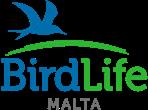










experiece.. just in time for the upcoming spring migration. Built way back in 1981, the old hide had stood proud over Għadira for over 40 years and provided nature lovers with many memorable experiences.
Sustainability is more than a buzzword to us. All material from the old hide was reused in the new building, and bricks made from recycled material were used. Bat and bird boxes were built into one of the walls and a roof garden will further blend the building with the habitat. Removing the old stairs renders the new hide accessible to all and provides eye-level views of the wetland.
Be sure to visit and enjoy some birdwatching.
This project was made possible with funding under Measure 4.4


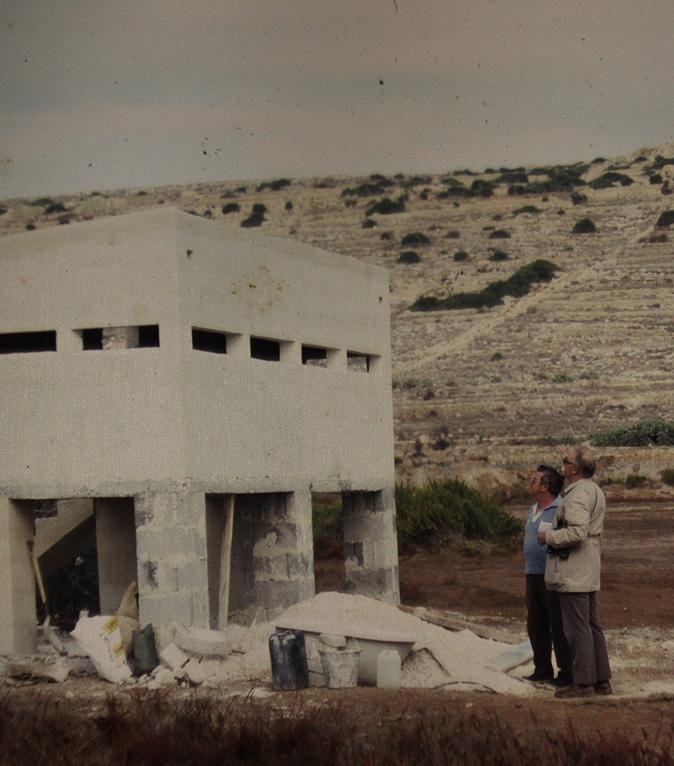
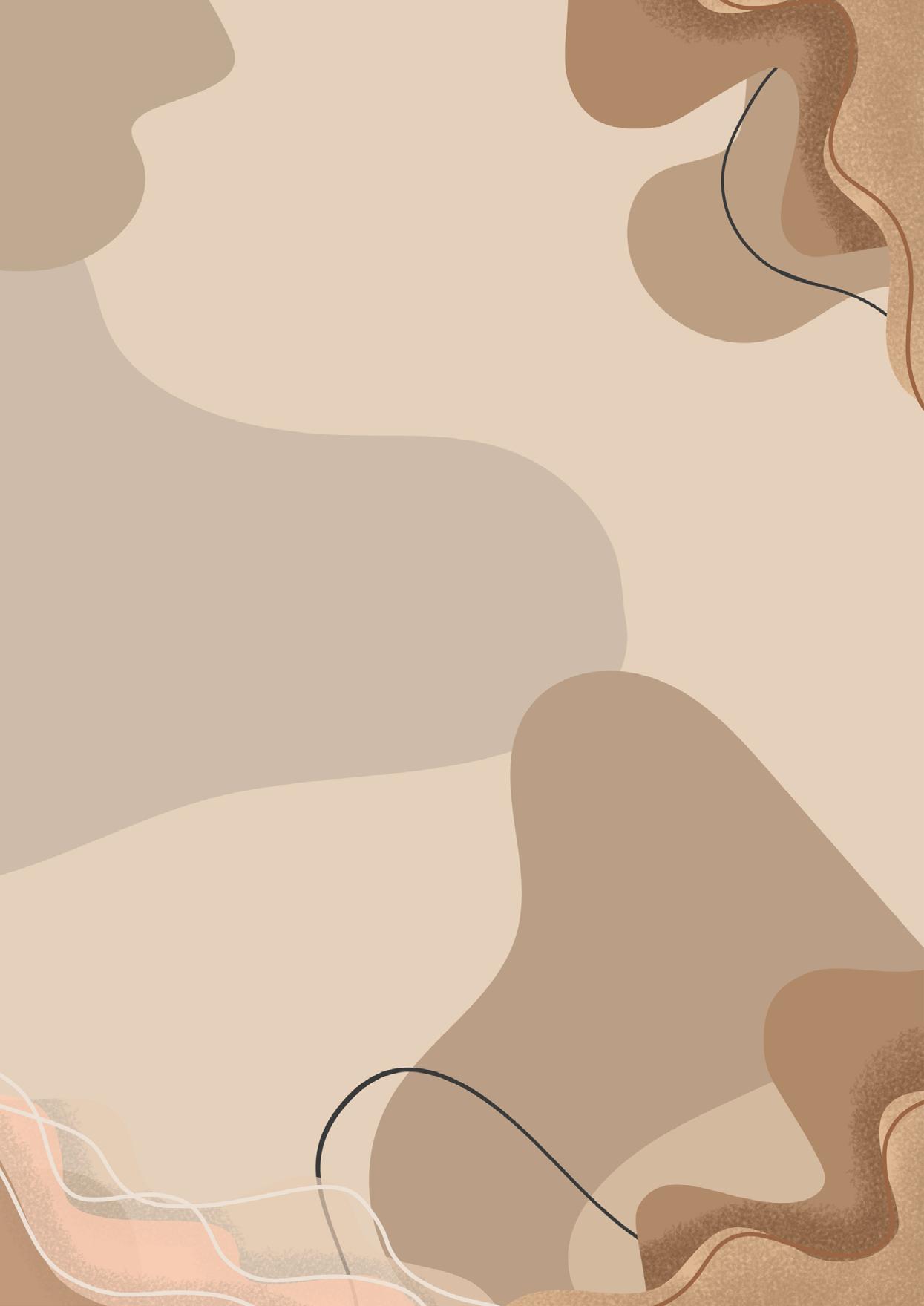

Saved from a miserable life in a hunter’s aviary, young Fiona the Flamingo was nursed back to health at BirdLife’s rehab centre, fitted with a GPS tracker and released at Għadira nature reserve, where she seemed to be adapting. But more adventure was in store...
From her GPS tracker’s transmissions, we noticed that Fiona had taken a liking to flying around the nature reserve but we never thought she would extend her flight. On 30 August 2024 she explored a good part of Malta’s coastline, and in a few hours she crossed over Red Tower towards Ċirkewwa, then looped

around the coast and reached the Majjistral cliffs. She landed at sea, however, and floated there all night. Fearing the worst, we rushed to the area next morning and luckily found her uninjured and still in good shape, though terribly exhausted from her adventure. A rescue ensued, and she was admitted back into rehab to be checked by vets.
With the opening of the hunting season on 1 September, the risk of Fiona being shot down during such exploratory flights was too high. We therefore decided to take Fiona up to Saline di Priolo in Sicily, a nature reserve managed by LIPU (our BirdLife Partner in Italy), who agreed to her release there. A month later, Fiona was released at the Priolo, where several greater flamingoes also often nest. The choice of site seemed to be to her liking, as from her tracks we still see she is happily settled, visiting various parts of the saline lagoon where she has been
interacting with other flamingoes that migrated in. She was even spotted by a BirdLife Malta group during an excursion to Saline di Priolo some weeks ago.
We will keep following Fiona’s movements in case she ventures back to Malta one day. Flamingoes can live more than 30 years and are known to move between lagoons across the Mediterranean. So we may yet come back with more stories about her adventures!
Fiona’s story is a testimonial of how our work in wildlife crime, rehabilitation and education has given this greater flamingo and other birds a second chance.
Want to support our work with other rehab cases? Get in touch!


This beautiful 7 km walk takes you from Mġarr Harbour (Gozo Ferry Terminal) to Xewkija – one of the oldest villages in Gozo. Along the way, you will pass through breathtaking coastal landscapes, historic landmarks, and diverse wildlife. You’ll explore saltpans, a 17th-century watchtower, and the stunning inlet of Mġarr ix-Xini before ending at Gozo’s largest church, the majestic Rotunda of Xewkija.
This beautiful 7 km walk takes you from Mġarr Harbour to Xewkija, one of the oldest villages in Gozo. Along the way, you will pass through breathtaking coastal landscapes, historic landmarks and diverse wildlife. You’ll explore saltpans, a 17thcentury watchtower, and the stunning inlet of Mġarr ix-Xini before ending at the Xewkija Rotunda.
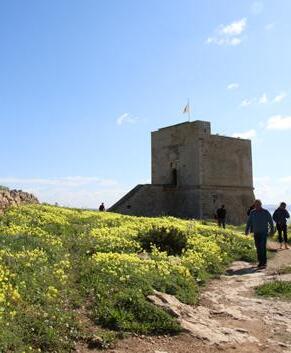

The starting point of the walk is Mġarr Harbour, Gozo’s main port, where the island welcomes visitors with buzzing ferry activity and scenic sea views. Walk uphill on the path parallel to the coast, starting on the left side of the Mġarr police station and make sure not to miss the beautiful views the path offers. When you reach the top, take a breather and enjoy the view before continuing to Xatt I-Aħmar Saltpans and the Fougasse – this was a type of cannon carved into the rock, with a powder chamber in the bottom, and used to fire large amounts of stones at an enemy trying to land on vulnerable coasts: an innovative coastal defense of past centuries!
Following the coastline, you will find Mġarr Ix-Xini Tower, a 17th-century watchtower built by the Knights of St John to protect Gozo’s coast from attacks. The tower is a part of the historical coastal defense system and could communicate with Santa Marija Tower on Kemmuna and later, also with the Santa Ċecilja Tower. Nowadays the tower is managed by volunteers and open on certain days or for group visits by appointment free of charge.
When you walk down the hill, you can enjoy a swim in the Mġarr Ix-Xini inlet. This secluded bay, one of Gozo’s most picturesque spots with its steep limestone cliffs and crystal-clear waters, is popular for snorkelling and swimming. The bay’s underwater terrain is home to several caves embedded in the cliff faces, offering opportunities for exploration. Also, thanks to its sheltered position and relatively shallow depths, Mġarr Ix-Xini is excellent for a night dive. Fun fact: This location was featured in the 2015 film By the Sea, starring Angelina Jolie and Brad Pitt.
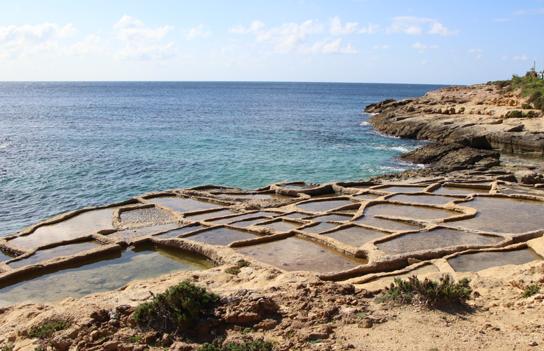
Finally, the most challenging part of the walk, the steep uphill climb towards Xewkija. The hike uphill might take your breath away, but so will the stunning countryside views across Gozo’s terraced fields and villages.
End Point: Xewkija Rotunda, the largest church in Gozo with the third largest unsupported dome in the world, offers a 360° panoramic view of the island. The Xewkija Rotunda is a spectacular architectural masterpiece that showcases the fine texture and versatility of local limestone and local craftsmanship. You can explore the church’s interior, take the elevator to the top for an unforgettable perspective, and visit the remnants of the old church, the best parts of which were delicately rebuilt next to the new church and is known as The Sculpture Museum.
This walk offers an array of flora and fauna. In spring keep an eye out for the crimson pea (ġilbiena tas-serp) with its deep red blooms, often found along rocky trails, while sulla (silla) adds colour to the landscape with its rich red flowers. The delicate common fumitory (daħnet l-art) with its pinkish-purple blooms thrives in rocky and disturbed soils. Also, look out for the sand crocus (żagħfran tal-blat), a perennial (lives several years) that




returns each spring with purple blooms. Meanwhile, soaking up the sun on a rock you may spot the endemic Maltese wall lizard (gremxula).
Don’t forget your binoculars, as you might encounter various birds too. Listen for the calls of breeding species such as zitting cisticola (bufula tal-imrewħa), greater short-toed lark (bilbla) and blue rock-thrush (merill), Malta’s national bird. Along the coast you may also spot yellow-legged gulls (gawwija prima) soaring over the cliffs. In spring you might also see barn swallow (ħuttafa), common swift (rundun) and birds of prey such as common kestrel (spanjulett) and Western marsh-harrier (bagħdan aħmar), possibly also a flock of European bee-eater (qerd in-naħal) flashing their vibrant colours as they migrate across the skies.
The walk is of moderate difficulty and should take around 3hr to complete. Wear comfortable shoes and consider that some parts will be slippery if wet. Bring sunscreen and lots of water, and most importantly, please respect nature by staying on marked paths, avoid littering, and observe wildlife from a distance to minimise disturbance.
DETAILED ROUTE


14 Dec 2024 BirdLife Malta’s Public Engagement team attended the Woodland Christmas Market at Ta’ Qali. Visitors took part in our games and festive fun. They learned about wildlife with a spinning-wheel quiz and picked out Christmas gifts from our selection of merchandise which is also available at our nature reserves.

20 Dec 2024 Christmas Fair at St Michael’s Foundation was a wonderful occasion. At our stand, students, parents and staff explored Malta’s wintering birds, browsed our merchandise and signed up for membership. The day was lively, filled with interactions and student participation.


11 Jan 2025 In collaboration with Science in the City, BirdLife Malta had an interactive workshop about the white wagtail roost in Valletta. The event started at the Valletta Design Cluster, where participants learned about our wintering birds and filled out interactive worksheets, followed by a short walk to observe the roost and have a go at counting wagtails.

12 Jan 2025 Our Events & Activities Committee explored Żurrieq on a 3-hour walk, visiting landmarks like Il-Mitħna tax-Xarolla, Il-Kappella ta’ Sant’Andrija, and Wied il-Bassasa. The weather started cloudy but brightened as the participants reached the valley, where they enjoyed stunning views of Filfla and the Blue Grotto.
16 Jan 2025 With help from enthusiastic volunteers, BirdLife staff cleaned up Salina saltpans. The sea storms had brought in tiny pieces of plastic, requiring meticulous collecting; but the rubbish included larger items too, such as tyres, buoys, flip flops, torches and other objects jetsam and flotsam, along with one surprising find: a shark liver! We are grateful to the volunteers for helping us clean up this vital habitat.


18 Jan 2025 BirdLife Malta organised an event for families with children with learning and developmental disabilities through the A Superpower to Defend Nature project funded by Erasmus +. Over 15 families participated in the event and enjoyed various activities at their own pace. Many expressed their appreciation and interest in our future events, helping build a new community of nature-oriented people. We are grateful to the volunteers from Commission for the Rights of Persons with Disability (CRPD) and the Autistic Student Community for helping out at the event.

19 Jan 2025 Our Young Birders Club started the year with an exciting outing to Foresta 2000, Iċ-Ċumnija and Għadira Nature Reserve. Children and parents spotted wintering birds, discovered local flora and fauna, and attended a bird ringing session. The event introduced young nature enthusiasts to club activities. We look forward to more adventures ahead, bringing young birdwatchers together.

25 Jan 2025 First Gulls Day Out at Salina Nature Reserve was a success. The participants enjoyed four short talks and tours guided by our experienced staff, who helped identify blackheaded, Mediterranean, slender-billed and yellow-legged gulls – even a surprise Sandwich tern. Attendees also explored gull migration, GPS tracking and colour-ring schemes. A great day of connecting with nature.

28, 29 Jan 2025 BirdLife Malta participated in the annual FestAmbjent at Junior College. Students learned about nature conservation and discovered ways to get involved. It was a fantastic opportunity to connect with young people interested in environment
protection. We always welcome more students to our initiatives, and hopefully inspire the next generation of nature lovers.

30 Jan 2025 As part of Science in the City Goes to School, BirdLife Malta joined other researchers to deliver a school workshop to promote careers in STEM. We introduced students to ornithological research, bird ringing and tracking techniques. Together, we analysed the bird ringing process and its aim in fun a way, which sparked great enthusiasm among the students. We are excited to engage with schools and community, raising awareness about our work and inspiring young people to take an interest in wildlife conservation.

2 Feb 2025 We attended Festa Annimali where people visited our stand and engaged in various educational games, tested their wildlife knowledge and learned ways to help protect birds in Malta. Many supported our work by buying our merchandise (also available at our nature reserves).
2 Feb 2025 To celebrate World Wetlands Day, BirdLife Malta opened the Salina wetland to the public, offering a chance to explore this newly rewilded habitat and its ecological significance.

Early visitors observed bird ringing and learned about bird conservation efforts firsthand. Thanks to our collaboration with Malta National Aquarium, attendees also discovered more about water ecosystems and marine life.

10 Feb 2025 At Għadira Nature Reserve we celebrated World Wetlands Day and the end of the hunting season where participants explored the wetland and our new birdwatching hide. A key moment was the release of rehabilitated birds – a song thrush, a hawfinch, two lapwings and two common kestrels – back into their natural habitat. A memorable experience for all who joined.
6 Apr 2025

12 Apr 2025 Our annual fundraising Walk





Setting up a bird table is a great treat for hungry birds. And watching our feathered customers pecking away can be very satisfying. San Anton School set up a bird table in their Dinja Waħda Garden but it’s far from the classrooms so the students couldn’t enjoy the spectacle. So BirdLife lent a magical hand by setting up a live-feed camera for them – right on top of the bird table! Kids can now watch sparrows and robins snacking on their classroom screen. We hear they’re super excited about it. Well done!